SUPPORTING ENVIRONMENTS FOR SOCIAL DYSTOPIA:
page 1: Metropolis (1927) ▪ Metropolis (2001)
▪ page 2: Blade Runner ▪ Akira
The urban environment of Blade Runner (Scott 1982) is rich in detail, complex, and very convincing. Unlike either Metropolis film, this setting is a real city – Los Angeles – projected into a possible future, the year 2019. The image of the city is meant to be vaguely familiar to the audience, using history and culture to create links between the real contemporary city and the filmic futuristic version presented.
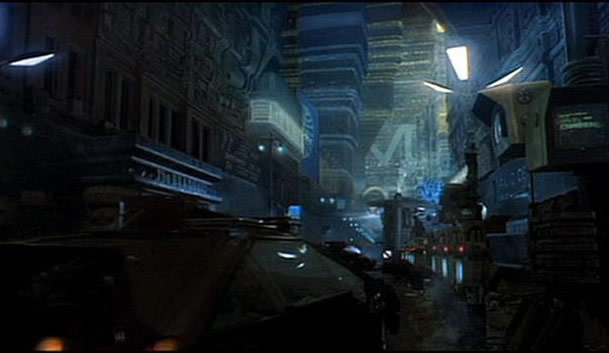 The sets of Blade Runner are not entirely real, but were created by layering constructed model sets, matte painted backgrounds and real L.A. buildings. The historical ‘monuments’ in Blade Runner are not spiritual icons (as in Metropolis 1927) but cultural sites - great architectural landmarks from the late nineteenth- and early twentieth century. The plots of both films give deliberate significance to these historical buildings, which they portray as being preserved despite technological advances. Like Zone 1 of Metropolis (2001), however, buildings from earlier times are shown as the slums of the future.
The sets of Blade Runner are not entirely real, but were created by layering constructed model sets, matte painted backgrounds and real L.A. buildings. The historical ‘monuments’ in Blade Runner are not spiritual icons (as in Metropolis 1927) but cultural sites - great architectural landmarks from the late nineteenth- and early twentieth century. The plots of both films give deliberate significance to these historical buildings, which they portray as being preserved despite technological advances. Like Zone 1 of Metropolis (2001), however, buildings from earlier times are shown as the slums of the future.
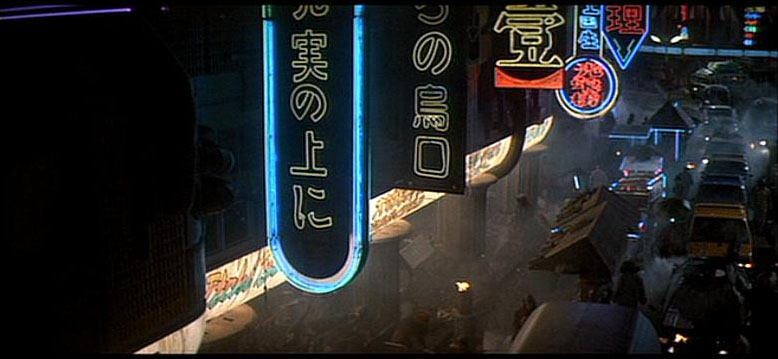 “I’m trying to make it as real as possible. This is a tangible future, not so exotic as to be unbelievable … like today, only
“I’m trying to make it as real as possible. This is a tangible future, not so exotic as to be unbelievable … like today, only
more so.”
– director Ridley Scott, 1981
Similarly to Metropolis 1927 and 2001 (and Akira, to be discussed below), Blade Runner presents a potential future outcome to contemporary urban issues. The ‘overload principle’ gives the city enough visual variety to communicate the density and activity Scott envisioned for a mega city in 2019 (Webb 1999), an effect which is likewise achieved in Tezuko’s Metropolis (2001) but lacking in Lang’s Metropolis (1927).L.A. 2019 is densely over-populated, severely polluted and corrupted by the technology created to support the city. 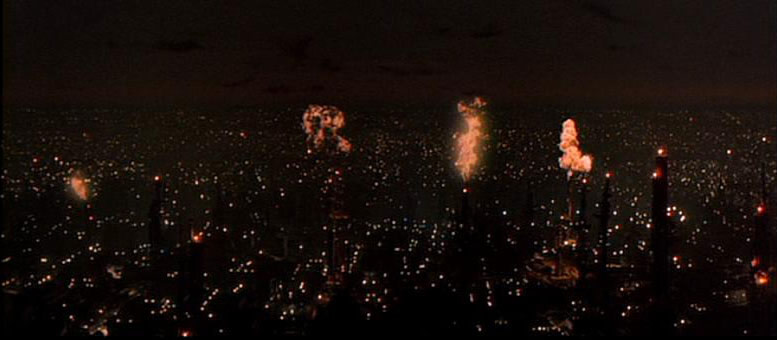 The story explains that middle-class citizens have fled to off-world colonies – the suburbs of the space age – leaving the city to the masses of urban poor in derelict ghettoes, and the few members of the upper class who remain to rule them.
The story explains that middle-class citizens have fled to off-world colonies – the suburbs of the space age – leaving the city to the masses of urban poor in derelict ghettoes, and the few members of the upper class who remain to rule them.
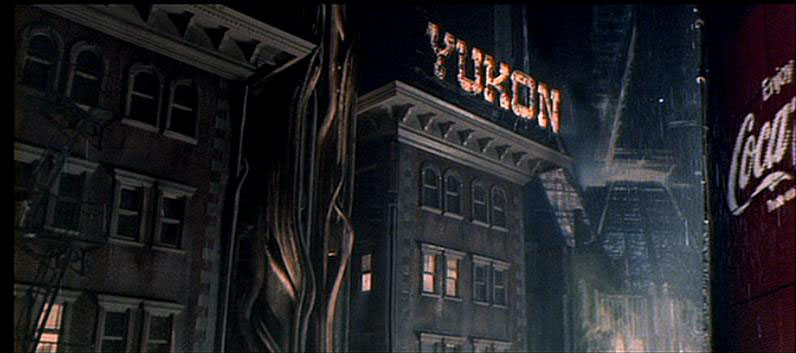 As in both Metropolises, the types of urban environment shown support the social dystopia presented by typifying the inhabitants of upper or lower classes. There are no underground cities shown in Blade Runner, thus the city at street level is lowest on the echelon: grimy, dark and wet, full of fog and smoke punctuated by the cheap flashiness of neon lights. Old buildings are left in disrepair and decay, abandoned to the poor. The sun never reaches the streets in L.A. 2019. The urban environment of the lower class - where the replicants can hide - is sordid, disorienting and dismal. Another ghetto full of poor people and robots, it is markedly similar to Metropolis (2001)’s Zone 1 in atmosphere and effects.
As in both Metropolises, the types of urban environment shown support the social dystopia presented by typifying the inhabitants of upper or lower classes. There are no underground cities shown in Blade Runner, thus the city at street level is lowest on the echelon: grimy, dark and wet, full of fog and smoke punctuated by the cheap flashiness of neon lights. Old buildings are left in disrepair and decay, abandoned to the poor. The sun never reaches the streets in L.A. 2019. The urban environment of the lower class - where the replicants can hide - is sordid, disorienting and dismal. Another ghetto full of poor people and robots, it is markedly similar to Metropolis (2001)’s Zone 1 in atmosphere and effects.
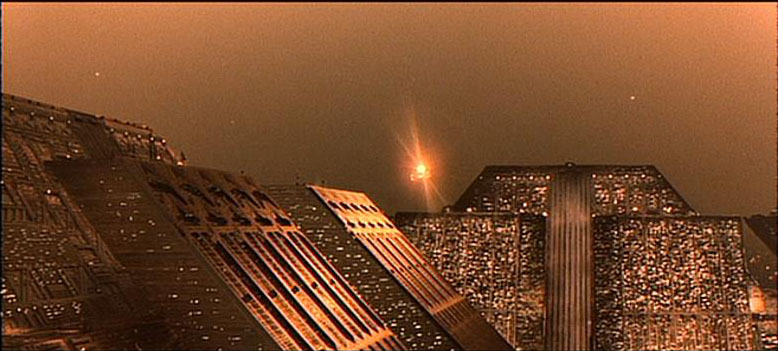 The environment of the upper class is above the crowds and dirt and chaos, re-using the technique of vertical hierarchy to represent the power of the Tyrell Corporation and its founder. As in the Tower of Babel (Metropolis 1927) or the ziggurat (Metropolis 2001), the most powerful figure in the city – and the creator of the social dystopia portrayed - is housed in the most iconic building. Tyrell’s seven hundred story pyramid, likewise detailed with rich materials to reinforce the image of power and wealth, has a broad view across the city: the air is not clean at the tops of the towers, but the sun can be seen through the haze of pollution.
The environment of the upper class is above the crowds and dirt and chaos, re-using the technique of vertical hierarchy to represent the power of the Tyrell Corporation and its founder. As in the Tower of Babel (Metropolis 1927) or the ziggurat (Metropolis 2001), the most powerful figure in the city – and the creator of the social dystopia portrayed - is housed in the most iconic building. Tyrell’s seven hundred story pyramid, likewise detailed with rich materials to reinforce the image of power and wealth, has a broad view across the city: the air is not clean at the tops of the towers, but the sun can be seen through the haze of pollution.
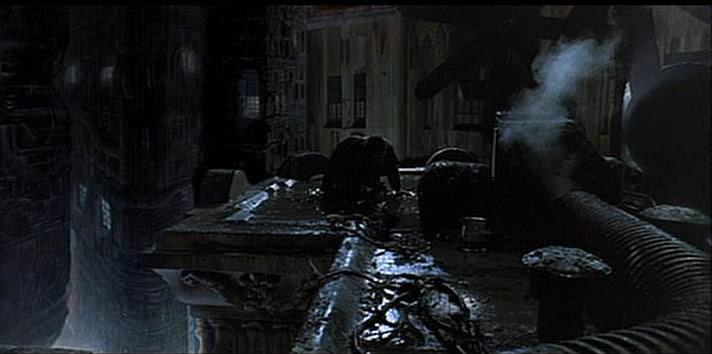 The urban environment of Blade Runner is essential to the development of the film: because the plot is futuristic and unfamiliar, the urban environment must be convincing in order to give the plot credibility. Scott’s vision of L.A. 2019 is more technologically advanced than the contemporary city but somehow not entirely implausible as a vision of the future. Even when real buildings are used, high-technology props and images of the futuristic city through windows maintain the image of the film as a future reality and not a possible present one.
The urban environment of Blade Runner is essential to the development of the film: because the plot is futuristic and unfamiliar, the urban environment must be convincing in order to give the plot credibility. Scott’s vision of L.A. 2019 is more technologically advanced than the contemporary city but somehow not entirely implausible as a vision of the future. Even when real buildings are used, high-technology props and images of the futuristic city through windows maintain the image of the film as a future reality and not a possible present one.
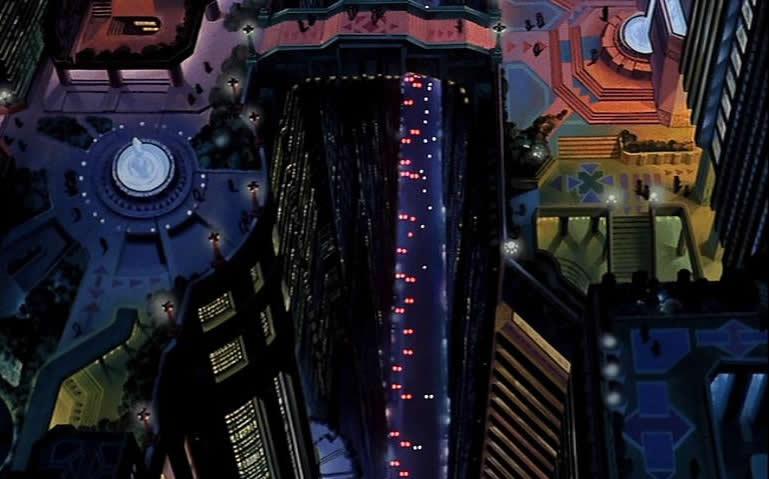 The urban environment of Akira (Otomo 1988) is similar in that both films are futuristic visions of existing cities, inspired by the energy of the contemporary location and projected into a possible future. The setting in real cities, use of some recognizable buildings and explicit reference to the city’s name produces a very different effect on the audience than the fate of an anonymous set or fabricated city. Both films are also set in the not-too-distant year 2019.
The urban environment of Akira (Otomo 1988) is similar in that both films are futuristic visions of existing cities, inspired by the energy of the contemporary location and projected into a possible future. The setting in real cities, use of some recognizable buildings and explicit reference to the city’s name produces a very different effect on the audience than the fate of an anonymous set or fabricated city. Both films are also set in the not-too-distant year 2019.
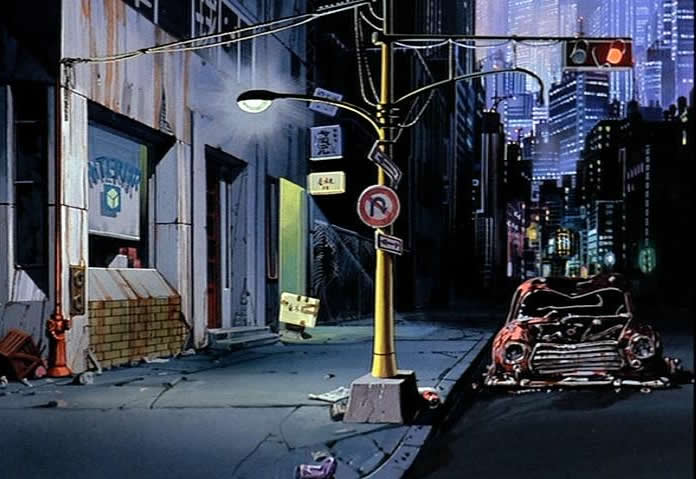 The urban environments used reinforce the social situations portrayed in the film: in Akira these include delinquent youths, urban legends, government control, social unrest and uncertainty about the future (Wikipedia, 2006e).The city in Akira - Neo Tokyo - is less literally stratified, but broken down into districts with more or less appealing qualities. Akira’s use of ghetto architecture, dark alleys and run-down streets express the anarchy and dangers of the realm inhabited by Neo Tokyo’s reform-school teen gangs, like Blade Runner’s Chinatown slums and Metropolis (2001)’s Zone 1. Other parts of the city are full of bright lights and towers rising to the sky, with the elegant clean lines of modern architecture.
The urban environments used reinforce the social situations portrayed in the film: in Akira these include delinquent youths, urban legends, government control, social unrest and uncertainty about the future (Wikipedia, 2006e).The city in Akira - Neo Tokyo - is less literally stratified, but broken down into districts with more or less appealing qualities. Akira’s use of ghetto architecture, dark alleys and run-down streets express the anarchy and dangers of the realm inhabited by Neo Tokyo’s reform-school teen gangs, like Blade Runner’s Chinatown slums and Metropolis (2001)’s Zone 1. Other parts of the city are full of bright lights and towers rising to the sky, with the elegant clean lines of modern architecture.
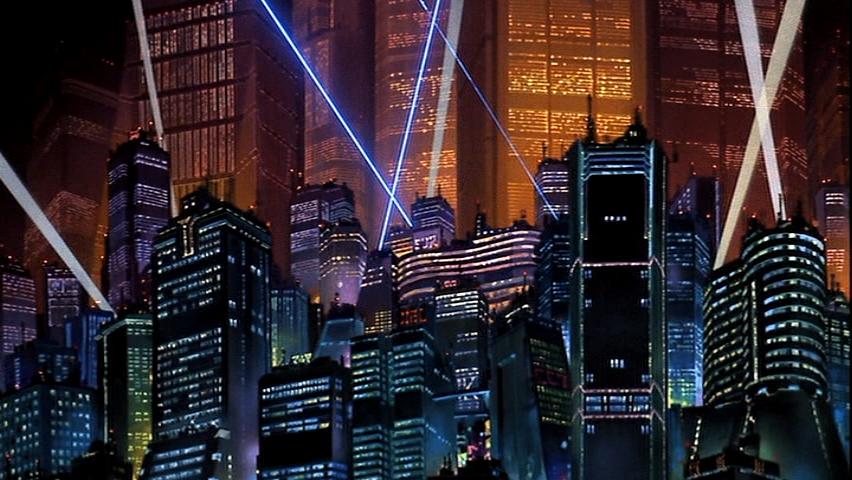 All of these films create a perceptual distance from the contemporary city through abnormal tonality - like Sin City, but less extreme - and aerial effects. Blade Runner makes extensive use of physical smog, fog and smoke, while manga films Akira and Metropolis (2001) use animated light effects like spotlight beams and holograms to enhance the sensory depiction of the city. The urban environments presented are full of diversity and references to history.
All of these films create a perceptual distance from the contemporary city through abnormal tonality - like Sin City, but less extreme - and aerial effects. Blade Runner makes extensive use of physical smog, fog and smoke, while manga films Akira and Metropolis (2001) use animated light effects like spotlight beams and holograms to enhance the sensory depiction of the city. The urban environments presented are full of diversity and references to history.
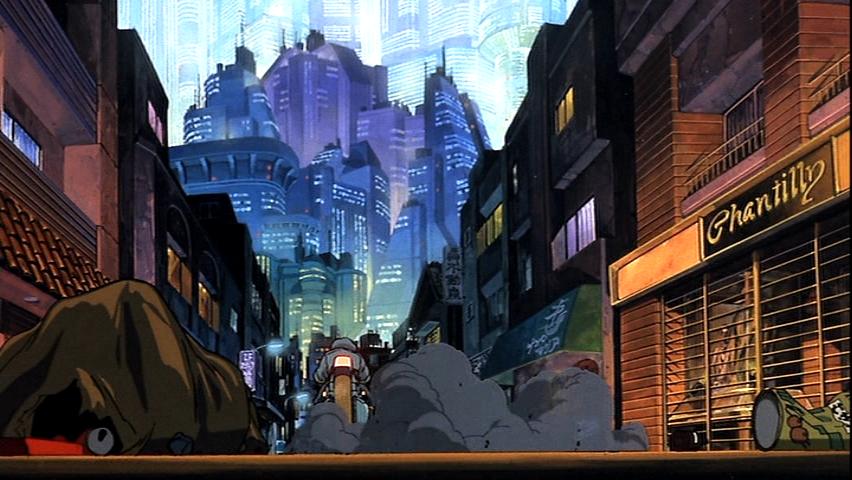 Blade Runner and Akira, in particular, use the same technique of placing more traditional urban elements – three- to five-storey buildings with shop fronts and signage – along the street face in the foreground, with towering mega structures in the background. This gives the desired impression of immense scale, but also maintains a sense of history which strengthens the imagined future city’s ties with contemporary reality. These films are persuasive because each urban environment is suitably complex and carefully detailed, supporting the dystopia of the plot by the faithful translation of social issues into a readable visual form.
Blade Runner and Akira, in particular, use the same technique of placing more traditional urban elements – three- to five-storey buildings with shop fronts and signage – along the street face in the foreground, with towering mega structures in the background. This gives the desired impression of immense scale, but also maintains a sense of history which strengthens the imagined future city’s ties with contemporary reality. These films are persuasive because each urban environment is suitably complex and carefully detailed, supporting the dystopia of the plot by the faithful translation of social issues into a readable visual form.














